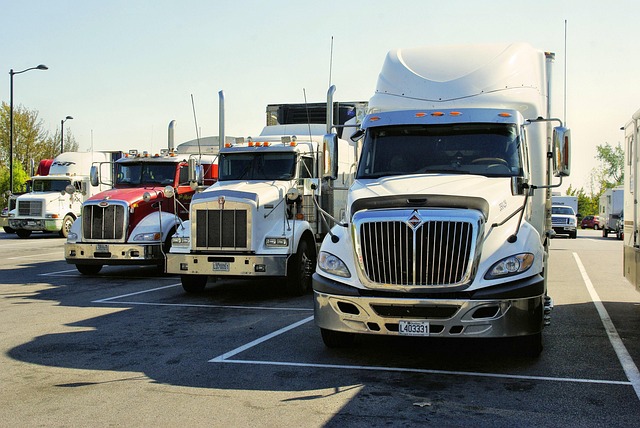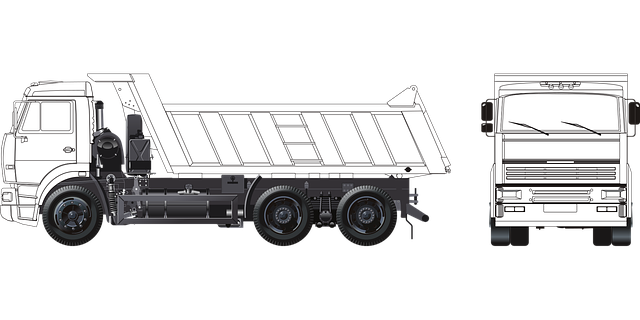Looking to register your car in California? Navigating the process can seem daunting, but with the right guidance, it’s a breeze. This comprehensive guide breaks down the steps involved, from understanding the state’s requirements to providing the essential documents and even explaining the crucial step of VIN verification. We’ll walk you through submitting your application, paying fees, and post-registration considerations.
- Understanding the California Vehicle Registration Process
- Gather Required Documents for Car Registration
- How to Perform VIN Verification in California
- Submitting Your Application and Paying Fees
- Post-Registration Steps and Important Considerations
Understanding the California Vehicle Registration Process

In California, registering a car involves several steps, beginning with ensuring your vehicle meets all safety and emissions standards. The process starts at a California Department of Motor Vehicles (DMV) office or online through the DMV’s website. One crucial step in this process is vin verification, which confirms the authenticity of your Vehicle Identification Number (VIN). This step is essential to prevent fraud and ensure that your vehicle complies with all legal requirements.
A mobile vin inspection or mobile vin verification service can be particularly convenient for those who prefer not to visit a DMV office. These services send a trained specialist to your location to perform the VIN check, saving you time and effort. This alternative is especially useful for busy individuals or those who live in remote areas, allowing them to complete the registration process with minimal hassle.
Gather Required Documents for Car Registration

Before you begin the registration process, make sure to gather all the necessary documents required by the California Department of Motor Vehicles (DMV). This typically includes proof of ownership, such as a vehicle title or bill of sale, along with valid identification like a driver’s license or state-issued ID. An essential step in this preparation is undergoing a vin verification process, which involves checking the vehicle’s unique identifier (VIN) to ensure its authenticity and history.
You may also require additional documents depending on how you purchased the car. For instance, if you’re registering a car bought from a dealership, they usually provide the necessary forms. However, if you’re dealing with a private seller, it’s crucial to obtain a signed bill of sale that includes details like the vehicle’s make, model, year, and VIN, along with your contact information and that of the seller. For convenience, many people opt for mobile vin inspection services or use mobile vin verifier apps to streamline this document-gathering stage of car registration in California.
How to Perform VIN Verification in California

In California, performing a Vehicle Identification Number (VIN) verification is a crucial step during the car registration process. To begin, gather all necessary documents, including your vehicle’s registration certificate, proof of insurance, and a valid driver’s license. Next, locate the VIN on your car—typically found on the dashboard or door frame. Once you have this information, you can verify it using a mobile vin verifier or check with the California Department of Motor Vehicles (DMV) to ensure its authenticity.
A mobile vin inspection or verification through specialized apps is another convenient option available in California. These services allow you to confirm your car’s history and details remotely, saving time and effort. By ensuring the VIN is accurate and matching the vehicle’s specifications, you can streamline the registration process and avoid potential delays or issues with the DMV.
Submitting Your Application and Paying Fees

After completing your vehicle registration application, it’s time to submit it along with the required documents and fees. The California Department of Motor Vehicles (DMV) will review your application and perform a vin verification process, which is crucial for ensuring the accuracy of the vehicle identification number (VIN). This step involves cross-referencing the VIN with their records to prevent fraud.
To streamline this process, many individuals opt for a mobile vin verifier or vin inspection service. These services send a licensed inspector to your location, eliminating the need to visit a DMV office. The fees for registration, including the vin verification charge, must be paid in full at this stage. Ensure you have all necessary funds ready to avoid any delays in the registration process.
Post-Registration Steps and Important Considerations

After successfully registering your car in California, there are several crucial post-registration steps to ensure a smooth ownership experience. One essential task is to obtain a Vehicle Identification Number (VIN) verification, which can be done through various official channels or even with the help of mobile vin verification and inspection services. These services allow you to confirm the vehicle’s history, specifications, and potential issues from the comfort of your home or garage.
Additionally, it’s important to consider other vital matters such as updating your insurance, registering your vehicle for road taxes, and ensuring all necessary documents are in order. Keep track of maintenance schedules, especially if you’ve recently purchased a used car, as this can significantly impact its long-term performance and resale value. Utilizing mobile vin verifier apps or services can streamline these processes, making it easier to manage your new vehicle’s registration and compliance requirements in the Golden State.
Registering a car in California involves understanding the state’s vehicle registration process, gathering essential documents, and completing key steps like VIN verification. By following these guidelines, from preparing required paperwork to submitting your application and paying fees, you’ll ensure a smooth transition into California’s vehicular landscape. Remember to take note of post-registration responsibilities and important considerations for a complete and compliant ownership experience.
